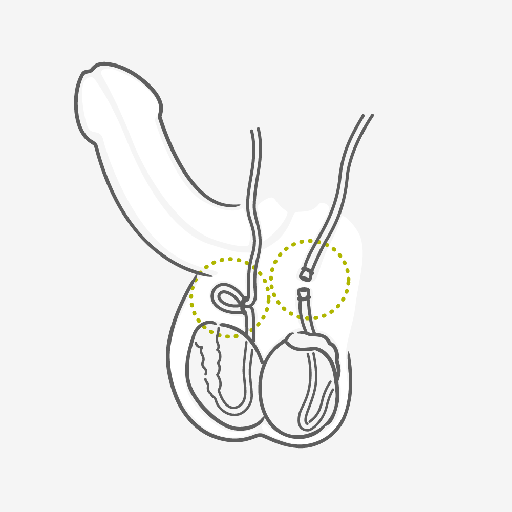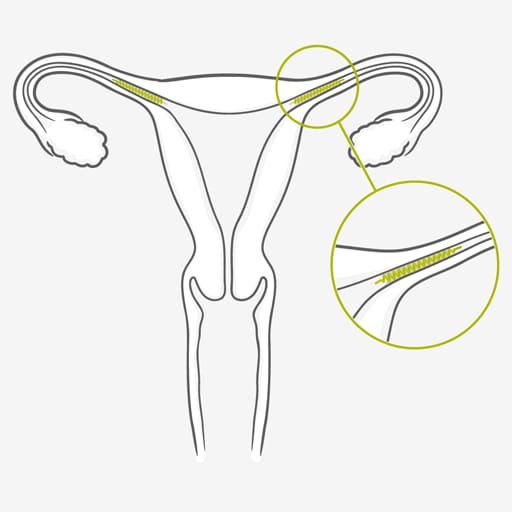STERILIZATION
WHEN and HOW?
Sterilization is a permanent method of contraception, suitable for people who are sure they never want children or do not want any more children. Sterilization is available for both women and men and there are a few different types of procedure:
How is female sterilization performed?
The most common forms of female sterilization are the surgical and non-surgical techniques. Both methods completely stop the chance of a sperm meeting an egg in the womb, but the way they do it are slightly different.
- Surgical: One way is by tying and cutting the tubes and this is called tubal ligation. The fallopian tubes can also be sealed using an instrument with an electrical current or closed with clips, clamps, or rings so that the sperm cannot meet the egg. A medical device is put inside the fallopian tube through the vagina with a special catheter. Sometimes, even a small piece of the tube is removed.
- Whereas non-surgical sterilization blocks the tubes up so nothing is getting in or out. A small flexible, metal insert is put into the fallopian tubes through the vagina with a special catheter. The device works by causing scar tissue to form around the coil. This blocks the fallopian tubes and stops you from getting pregnant. You need to use another contraception method during the first 3 months but once done it is permanent.
How is male sterilization (vasectomy) performed?
Male sterilization is often referred to as a vasectomy, and is a surgical procedure in which the sperm-carrying ducts are cut and the operation can be carried out under local anesthetic. After the procedure, a man can still ejaculate, but there is no sperm present. It affects a man’s fertility potential but has no effect on his libido or the ability to have sexual intercourse. It is important you talk first with your healthcare provider to receive counseling on the benefits and risks.
Sometimes it is possible to reverse the operation, but there are no guarantees. Reversal involves complicated surgery that might not work.
Tabs header
Sterilization PROS:
- It lasts forever
- Highly effective
- It doesn’t interrupt sex
- It isn’t affected by other medications
- Suitable for everyone who never wants to have a child (or does not want any more children) and wants a permanent contraceptive option
- Hormone free
Sterilization CONS:
- It lasts forever
- It may cause pain, bleeding, infection or other complications after surgery
- It may cause tubal pregnancy
- You may need general anesthesia
- Rarely, there can be a failure in which the Fallopian tubes reopen, or closure is incomplete
- Sterilization is sometimes reversible, although the procedure is complicated and rarely successful
- It requires a healthcare provider to do it
- Does not protect against HIV infection (AIDS) and other sexually transmitted infections (STIs)
What you should also know about Sterilization
Sterilization is a permanent method of contraception, suitable for people who are sure they never want children or do not want any more children. Sterilization is available for both women and men and there are a few different types of procedure, they do all have the same ending though, no babies and no going back. Before you decide on sterilization, you should contact an independent counselor or talk to your gynecologist.
There are other forms of long-acting contraception which are as efficient, but reversible such as the Hormonal Coil (IUS), Copper Coil (IUD), or implant which all have similar low failure rates.
Sterilization is performed in a hospital mainly with general anesthesia. Surgical sterilization needs a considerably longer recovery time because of the invasive way the procedure is carried out. The operation only affects the fertility potential and has no effect on the libido or the ability to have sexual intercourse. It is important you talk first with your healthcare provider to receive counseling on the benefits and risks.

Questions & Answers about Sterilization
FREQUENTLY ASKED QUESTIONS
No. Most research finds no major changes in bleeding patterns after female sterilization. If a woman was using a hormonal method or IUD before sterilization, her bleeding pattern will return to the way it was before she used these methods. For example, women switching from combined oral contraceptives to female sterilization may notice heavier bleeding as their monthly bleeding returns to usual patterns. Note, however, that a woman's monthly bleeding usually becomes less regular as she approaches menopause.
No. After sterilization a woman will look and feel the same as before. She can have sex the same as before. She may find that she enjoys sex more because she does not have to worry about getting pregnant.
There is no justification for denying sterilization to a woman just because of her age, the number of her living children, or her marital status. Each woman must be allowed to decide for herself whether or not she will want more children and whether or not to have sterilization.
Female sterilization is very effective at preventing pregnancy and is intended to be permanent. It is not 100% effective, however. Women who have been sterilized have a slight risk of becoming pregnant: About 5 of every 1,000 women become pregnant within a year after the procedure. The small risk of pregnancy remains beyond the first year and until the woman reaches menopause.
Sterilization is intended to be permanent. People who may want more children should choose a different contraceptive method. Surgery to reverse sterilization is possible for only some women—those who have enough fallopian tube left. Even among these women, reversal often does not lead to pregnancy. The procedure is difficult and expensive, and healthcare providers who are able to perform such surgery are hard to find. When pregnancy does occur after reversal, the risk that the pregnancy will be ectopic is greater than usual. Thus, sterilization should be considered irreversible.







































